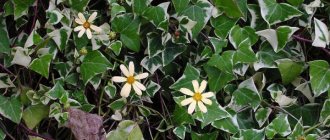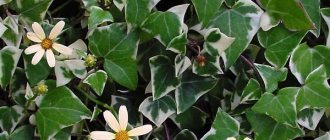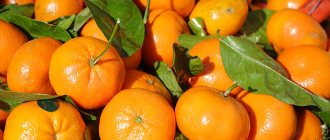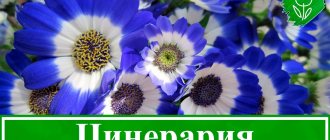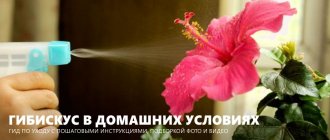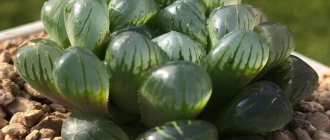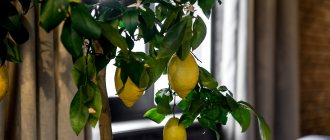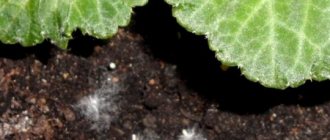Senecio is a less common name for the many-sided ragworts known to many plant growers, which are successfully grown both in the garden and as a flower in a pot at home. These herbaceous perennials are so diverse in form that it is difficult to accept the fact that they are all representatives of the same group. However, these are close relatives who are absolutely no different from each other in the principles of cultivation and care. It is a surprisingly diverse yet incredibly united flower culture.
Biological description
All godsons are classified as succulents, i.e. plants capable of heating up moisture reserves and living off them in depleted growing conditions. The species diversity of senecio is enormous, including coniferous greens, pea-like greens, and climbing ones like ivy. Their shoots can grow like vines, or they can form bushes and even trees. Moreover, they can be pubescent and bare, erect and drooping, and the shape of the leaves of this group of plants makes it almost impossible to cover. In nature, there are more than 3000 of them. And they all have only one thing in common - the classic inflorescence-basket.
Senecio is grown both as a potted and garden crop. There are species that are intended for cutting. From ragworts alone you can create a rich collection of succulents, which will be very diverse.
Popular varieties of Senecio, photo of flowers
With all the great variety of ragworts in indoor culture, the following varieties are most widespread.
Godson Rowley
The undoubted leader among the Senecio. It is valued for its rapid growth and spectacularly hanging thin shoots with “peas” of leaves seemingly strung on them. The plant is popularly called “string of pearls”. The inflorescences are spherical in shape and have a cinnamon scent.
Ashy ragwort (Senecio Maritima)
In nature and when grown indoors, it is a perennial; it is grown on the site as a one-year plant. It is valued by landscape designers for its particular attractiveness as carpet plantings. In warmer regions it is grown as a wintering balcony crop, which in Europe is especially valued as a Christmas decoration for homes. The foliage is silver in color, against which the bright yellow inflorescences look contrasting.
Thicker groundsel (Senecio Crasissimus)
An erect shrub variety with stems growing up to 40-50 cm. The shoots are branched, rough, the leaves are green with a grayish-silver tint, oval with a slight point at the ends. The inflorescences are yellow, formed on a high peduncle.
Creeping ragwort
A variety characterized by short stature. Forms a compact upright shrub about 10cm high. The leaves are ligulate, linear-lanceolate, small (3-4 cm), directed straight upward. The shoots are fleshy. Valued for its muted color in bluish-gray tones. It looks unusual in a flower pot and contrasts perfectly with decorative pebbles as mulch. The flowers are white, sparse, collected in baskets.
Senecio rooting
The stems are creeping, ampelous, thin. branching, up to half a meter in length. The elongated thick leaves are round in shape, sparsely spaced and look very impressive due to their claw-like bend.
Senecio is often confused with cineraria. These are close relatives, but still different plants.
Home care
Senecio is, like all succulents, a hardy crop that can more easily withstand lack of care than heavy watering and other excessive measures. They can be easily grown at home by inexperienced and even careless gardeners. But you still need to know some simple rules of agricultural technology.
Lighting
Without exception, all varieties of crosses belong to light-loving crops, which, however, are ready to put up with some inconveniences in this regard. But they need to be provided with several hours of full sunlight. Ideal for them would be western and eastern window sills, slightly shaded southern windowsills at midday (the light should be diffused) or other locations of equal illumination. Lack of light is expressed in increased growth due to thinning shoots and loss of bright foliage color.
Watering
All succulents require moderate watering and do not tolerate waterlogging, and ragworts are the most sensitive in this regard. This point is the most difficult and strict to implement. Even during the active growing season (spring-summer), watering should be moderate. You don’t need to focus solely on the recommended frequency, but check each time whether the substrate is dry enough for the next watering. After the earthen ball dries out completely, it needs to be allowed to remain in this state for 2 days.
By autumn, these moderate procedures begin to be reduced even more, increasing the pause and preparing the succulent for wintering conditions. During the dormant period, almost dry conditions are created for the flower in the pot, occasionally adding moisture so that the greenery does not wilt. If there are no signs of loss of their elasticity, you don’t have to water the plant at all. It is unacceptable to use hard, calcareous water. In addition, it should always be well settled.
Air humidity
Crosses do not need humidified air at all; they feel even better in a dry room. Therefore, there is no need to take any measures to moisturize, much less spray the plant.
Temperature
Despite its southern origin, Senecio cannot be considered a fan of hot greenhouse conditions. Comfortable temperatures for it lie in the range of +22...+27C in spring and summer with a gradual decrease during the rest period, within the limits of what is possible for city apartments. If it is possible to provide cool temperatures of +12...+15C, the plants will have a great rest and will actively grow in the spring. The minimum threshold is considered to be +7C, but such a decrease is permissible only for a very short period.
Small deviations from the recommended temperatures are not critical, the main thing is that they should not be sharp.
As for drafts, the plant tolerates them well for a short time, but you cannot place a flower in a pot where there are constant drafts. One of the recommendations on how to care for senecio is frequent ventilation, since the culture loves fresh air. In the warm season, if possible, they can be placed outside, but not in direct sunlight. But any change in conditions should not be abrupt.
Top dressing
Feed the ragworts according to the usual strategy for succulents, 1-2 times a month, but only during the active growing season. Autumn and, especially, winter feeding can deprive the plant of the necessary resting phase. Ready-made compounds for succulents are used as fertilizers.
Brief rules for growing ragwort
The table provides brief rules for caring for ragwort at home.
| Lighting level | Adequate lighting with direct sunlight is necessary. |
| Content temperature | In the warm season, the optimal temperature is 22-25 degrees, in the fall it is reduced to 13-15 degrees, but not lower than 7 degrees. |
| Watering mode | In spring and summer, water in moderate mode. In autumn, watering is reduced, and in winter, watering is done only occasionally. |
| Air humidity | Air humidity is not important for growing ragwort. |
| The soil | The optimal soil is nutritious and loose soil. You can use ready-made substrates for succulents and cacti. |
| Feeding | Apply fertilizers 2 times a month from March to August. |
| Transfer | Adult plants are replanted once every 2-3 years, and young plants - annually in the spring. |
| Trimming | Regular pruning of very elongated stems is necessary. |
| Bloom | Flowering begins at the very beginning of summer and lasts about a month. |
| Reproduction | Seed, cuttings, layering. |
| Pests | Aphids, spider mites, scale insects. |
| Diseases | May be affected by powdery mildew and gray mold due to improper care. |
The soil
The easiest way is to use ready-made soil mixtures made for cacti and succulents. If it is not possible to buy a ready-made substrate, you need to select a loose, moderately nutritious and acid-neutral soil. It can be a mixture of leaf soil and coarse sand (2:1); some specimens grow better in a sandy-clay substrate. Much depends on what the plant is used to, therefore, when purchasing an already grown specimen of a flower in a pot, you should pay attention to what it grew in, or ask the seller about the composition of the soil.
Senecio ARTICULATUS (Kleinia, Raspberry, Senecio)
Senecio ARTICULATUS - Articulated groundsel, Kleinia articulata.
Description: Raspberry is one of the most unusual genera of amazing plants from the large Asteraceae (Asteraceae) family, the varieties of which include more than 3,000 different specimens. Perennial, less often annual, herbaceous plants, subshrubs, shrubs or small trees, widespread in different climatic zones in all regions of the globe. Many species of this plant are completely different from each other, but nevertheless belong to the same family and are “blood relatives”.
Their shoots are bare or pubescent. The leaves are also very diverse in shape - from elliptical to obovate, entire and dissected, lobed, pinnate, alternate. Inflorescences are baskets, from small to large, single or several in corymbs or panicles. Many representatives of this huge genus are known in culture; they are grown in open and closed ground as ornamental plants, they are bred for cutting, as potted plants, and are also used to decorate bouquets.
Artificial ragwort grows in the hills of the Cape Province (South Africa). Deciduous shrubs with a short stem, up to 50 cm tall, highly branched. The branches are round, up to 2 cm thick, dissected, light gray. The leaves are dissected or serrate-cut, thick, light gray. The petiole is long. There are several baskets, forming scutes. The flowers are yellow.
Care: The ragwort prefers a well-lit place, with some direct sun. A location on the east and west window is good. In the spring-summer period, it prefers a temperature of 22-26°C; in the fall, the temperature can be gradually reduced and in winter the plant can be kept at 12-15°C; the temperature should not fall below 7°C. It tolerates dry apartment air well and does not need additional humidification.
During the growing season, the groundsel is watered with moderately soft, settled water, a day or two after the top layer of the substrate has dried. In the fall, watering is reduced, in winter they water extremely rarely, or do without watering. Overfilling is very dangerous. Feed from March to August with fertilizers for succulents 2 times a month. The soil mixture should be nutritious, loose, with a neutral pH. A mixture of leaf soil and sand in a ratio of 2:1 is suitable. Ready-made substrates for cacti or succulents are suitable. Young plants are replanted annually in the spring, adults - after 2-3 years. Raspberries are propagated by cuttings, layering and seeds.
Reproduction: Seeds are sown superficially in a cactus mixture diluted half with sand. They are moistened with a spray bottle, covered with film and germinated in the light, but not in the sun, at a temperature of 20-23°C. The seedlings need ventilation. It is necessary to avoid waterlogging and drying out of crops. Seedlings dive in the cotyledon phase, one at a time into 5-centimeter pots.
Transfer
Actively growing young specimens require transplantation annually. Starting from the 3rd year of life, they need to be replanted only as needed. It is recommended to do this in the spring, when the plant is preparing or just starting to wake up. A fairly high drainage layer is poured into the bottom of the new dish (higher than for ordinary plants). When replanting, it is necessary to monitor the position of the root collar; its level must be maintained; deepening is unacceptable. Transplantation is carried out by transshipment with minimal damage to the root system.
Reproduction
Reproduction of senecio is considered as simple as caring for a flower. There are three methods available for this: cuttings, seeds and layering.
Seeds
The method is rarely used due to the length of the process, as well as the difficulty of obtaining seed material. The fact is that at home, senecio rarely bears fruit, and when buying ready-made seeds, there is a high risk of buying a low-quality product due to the short germination period. Ideally, these should be seeds no older than 1 year. Before sowing, the seed material is soaked until germination, after which it is laid out several at a time in a container with a very shallow depth. Planting in a permanent place is carried out after the seedlings form cotyledons.
The first individual pots for Senecio seedlings should be small, “according to their height.”
Green cuttings
This is the easiest and fastest way to obtain new copies. For cuttings, choose apical shoots 8-10 cm long. The lower pair of leaves is removed, and the cutting is left in the air for several hours to dry the cut. Then the green cuttings are placed in a sandy substrate, and the container is placed in a warm and bright place, where they usually quickly take root. The substrate is not moistened; it can be almost dry, only lightly sprayed with a spray bottle, but in no case wet.
It is better to plant rooted cuttings in a permanent place in several pieces for better decorativeness of the plant.
By layering
The method is not available for all varieties, but only for ragworts with creeping, hanging stems. To do this, prepare a wide container with a suitable substrate, which is placed next to the adult specimen. Having made a small groove, the shoot is placed in it, gently pressing it with a wooden slingshot to secure it to the ground. As soon as young shoots appear from the dormant buds, the plant can be separated from the mother bush. If you plan to transplant it into another container, it is better to do this not immediately after separation, but after adaptation in 1-2 weeks.
Diseases and pests
The culture is considered resistant to infections and indoor pests. But negligence in care, especially regarding watering, can cause diseases such as powdery mildew or root rot. For the same reason, mealybugs can appear in a flower pot. Weak specimens can be affected by aphids and spider mites, which again is most likely against the background of high humidity. The first and main help to the plant is the correction of care. It is advisable to treat it against pests using mechanical methods, but resorting to the use of insecticides indoors is permissible only in advanced cases. As for rot and fungal infections, all damaged parts of the stems will have to be cut out, the sections treated with wood ash or activated carbon, or sprayed with a fungicide.
Diseases and pests
Raspberries are rarely affected by pests and diseases. Only improper care of ragwort and lack of fresh air can provoke the appearance of aphids, spider mites, scale insects, powdery mildew and gray rot.
Damage to young shoots, leaves and inflorescences occurs due to the pelargonium greenhouse aphid: the buds stop blooming, the inflorescences become brown, and the leaves turn yellow. To eliminate aphids, you need to ventilate the room more, spray with water from a spray bottle, and in case of severe infestations, use insecticidal preparations.
Damage caused by spider mites causes the leaves to brown, and a fine web can be seen on the inside of the leaf. To get rid of mites, you need to regularly humidify the air in the room and rinse the ragwort with warm water. If the infestation is extensive, use Actellik.
Seaside and citrus mealybugs suck out all the leaf juice, so to get rid of them you need to treat the entire plant with a soap or alcohol solution, and in case of severe lesions - with a karbofos emulsion.
You can get rid of powdery mildew by using foundationazole according to the instructions, after first removing all damaged parts of the plant.
With gray rot, dry spots with a yellowish border appear. To combat it, use copper oxychloride, and you should also stop over-moistening the substrate, cool it and keep the plant in low light.
Possible problems when growing senecio
- Drying and falling of leaves, formation of brown spots on them. Too hot room (often such conditions are created on the windowsill between glass and curtains) and/or extremely dry conditions.
- Dry spots on leaf blades. Most likely, these are burns from direct sunlight.
- Spots of yellow or dirty brown color. The cause is overwatering.
- Reduction in leaf size, increase in internodes, elongation of weakly leafy shoots. Lack of light, plant too shaded.
- Loss of color brightness in variegated varieties. The problem can be caused either by a lack of light or by the pan being too tight.
Difficulties in growing
- The leaves turn brown and then dry out - most likely they are affected by spider mites; low humidity and high temperature in the room; Watering is irregular and insufficient.
- Brown spots are possibly sunburn caused by prolonged exposure to direct rays.
- The leaves are small, losing color or, with natural spotting, becoming simply green - insufficient lighting.
- Elongated stems with small foliage - insufficient lighting.
Euphorbia ragwort (Senecio anteuphorbium)
Perennial bush shedding leaves. Senecio anteuphorbium can reach a size of about 1.5 m in height. Its vertical stems have a succulent structure. Their thickness can be up to 1.5 cm. The stems bear small gray-green leaves about 3 cm long. They have a lanceolate shape and a pronounced vein, and there is a small spine at the top of each leaf. During flowering, basket-shaped inflorescences are formed, collected from small light yellow flowers.
Articulated groundsel (Senecio articulatus)
A small bush that sheds its leaves for the winter. Senecio articulatus is characterized by strong branching. Its shoots can reach up to half a meter in height. They are light gray in color and slightly rounded. Each branch can be up to 2 cm in thickness. The foliage is concentrated in the upper part of the branches. It has the same light gray color and can have a different (dissected or cut) shape. Each blade is located on a long petiole. During the flowering period, the species forms several corymbose inflorescences. The flowers are yellow in color.
Large-leaved groundsel (Senecio grandifolius)
Representatives of the species are medium-sized trees no more than 3 m in height. Senecio grandifolius is an evergreen plant. Their trunks begin to branch at the top, and the surface of the bark itself is covered with many growths-warts. The foliage is slightly heart-shaped or oval shaped. The length of each blade can reach up to 30 cm. The width is about 15 cm. The edges of the leaves are covered with grooves and denticles. The leaf blades have pubescence on the inside, but their outer side is completely smooth. During the flowering period, large and dense inflorescences-scutellets, collected from yellow flowers, are formed at the tops of the shoots.
Gray's ragwort (Senecio greyi)
This ragwort forms an evergreen bush up to 3 m high. Senecio greyi is distinguished by light, pubescent stems. Its leathery foliage is shaped like an egg. Its length can reach up to 10 cm, and its width is about 3 cm. On the inside, the leaves are also covered with a felt-like light fluff. On the front side, pubescence is present only on the main vein. The leaf is located on a petiole no more than 3 cm long. During the flowering period, the species forms inflorescences-baskets arranged in scutes. They resemble daisy baskets. The number of reed flowers can reach 15 pieces. They are painted yellow. The middle flowers are tiny bells.
Nailleaf ragwort (Senecio herreianus)
The species has rounded stems spreading along the ground. Senecio herreianus has distinctive thick leaves with a spur-like structure at the tip. Each leaf looks more like a fruit. Its length can reach up to 2 cm, and its width is about 1.5 cm. Each leaf is decorated with brownish stripes. The inflorescences are small in size.
Klein's ragwort (Senecio kleinia)
Perennial evergreen succulent. Senecio kleinia forms a bush up to 3 m high. Its stems have a whorled arrangement. Their length can reach up to 40 cm. Each stem is painted light green and has a pattern in the form of dark specks or stripes. The stems have a segmented structure; their components can be easily separated. The foliage is collected at the tops of the stems. It has the shape of a narrow elongated ellipse. The length of each blade can reach up to 15 cm with a width of no more than 2 cm. The color of the foliage is gray-green. During the flowering period, small light yellow flowers are formed, collected in corymbs.
Red groundsel (Senecio pulcher)
Herbaceous succulent. Senecio pulcher produces stems that can reach a meter in height. Its lobed foliage is located in the basal region or directly on the stems. The edges of the silver-green leaves have small serrations. During the flowering period, inflorescences in the form of baskets open on the stems. Their width reaches 7 cm. The color of the tubular flowers is rich yellow, and the reed flowers can have a lilac or pinkish-purple color. About 10 such inflorescences can open on each bush.
Common groundsel (Senecio macroglossus)
Succulent with creeping stems. Senecio macroglossus forms weakly branching stems that begin to become woody over time. On them, on small petioles, there are peak-shaped leaves, divided into several lobes. They look slightly like ivy foliage. The length of each leaf can reach up to 8 cm. Chamomile-shaped flowers have a spherical center and are complemented by pale yellow tongues. They can grow singly or in pairs.
This type of godson is considered undemanding in care and is quite popular among gardeners. Light and well-drained sandy soil is suitable for its cultivation. The large-tongued ragus bush should be kept in a bright place, but do not expose the plant to scorching rays. During the growth period, the bush is watered so that the soil has time to dry out. In winter, the soil is not moistened at all. During rest, the plant may shed its foliage.
Cuttings are excellent for propagating the species. Its cuttings take root very quickly even in a semi-dry sandy substrate; the main requirement of such seedlings is warmth. The variegated variety Variegatus is especially famous. Its foliage is decorated with light cream spots and streaks.
Rooting groundsel (Senecio radicans)
Non-shedding succulent. Senecio radicans has branched creeping stems characterized by a rapid rate of rooting. Their length reaches half a meter. Gray-green foliage is located on them alternately. The thickness of each leaf reaches 1 cm, and the length is about 2.5 cm. Each leaf is pointed at both edges, and its surface is decorated with dark green stripes. On long peduncles, white basket flowers bloom one at a time or in pairs.
Creeping groundsel (Senecio serpens)
This species has the form of a low-growing shrub. Senecio serpens grows to only 20 cm in height, but often has even smaller sizes. Its shoots are about 6 mm thick. Closer to the top of each shoot there are thick elongated leaves about 4 cm long and 7 mm wide. Their color is bluish-gray. There is a small point at the top of each leaf. Quite a lot of basket-shaped inflorescences bloom on the peduncles. Flower color is white.
Rowley's ragwort (Senecio rowleyanus)
An evergreen species with a very fast growth rate. Shoots of Senecio rowleyanus may droop or spread along the ground. Their length can be about 20 cm or up to 60 cm. The thickness of the shoots themselves is small, but the leaves located on them have a rather original shape. Each leaf resembles a round ball with a small pointed tip. The African plant contains moisture reserves in them. The width of such a leaf can reach up to 1 cm. The inflorescences of this species also have the shape of a ball. The white flowers they contain emit a delicate aroma reminiscent of cinnamon. The species is considered quite undemanding in care, but, like most godsons, it is poisonous. It is better to keep this plant away from children.
Stapeliiformis (Senecio stapeliiformis)
This species also belongs to the group of succulents. Senecio stapeliiformis forms a strong stem up to 20 cm long and about 2 cm wide. Closer to the base it begins to branch. The surface of the trunk is painted in different shades of green and supplemented with small sparse thorns. The foliage of this ragwort is quite small, resembles scales and does not exceed 0.5 cm in length. Its color is gray-green. During flowering, short flower stalks appear on the plant. They bloom with red basket-like flowers that look like carnations.
Haworth's ragwort (Senecio haworthii)
The species forms a kind of bush about 30 cm high. Senecio haworthii forms vertical shoots, solitary or slightly branched. On them, leaf blades in the form of tapering cylinders are arranged in a spiral. The surface of the leaves is covered with a light silvery coating. The length of the plates can reach up to 5 cm. The flowers are spherical in shape and form spherical inflorescences. Their color is orange or yellow.
This type of ragwort is considered quite capricious and is not often used as a house plant. Sandy soil with sufficient drainage is suitable for its cultivation. The bush is kept in diffused light. During the growth period, the plant is watered regularly, but little by little, and in winter it is kept completely without watering. The species suffers especially painfully from excess moisture in the soil. This type of ragwort can be propagated using cuttings. They are rooted in dry sand, placing the seedlings in a warm, bright place where direct sunlight does not reach.
Bloody groundsel (Senecio cruentus)
This species is also called garden or bloody cineraria, and modern classifications include it in the genus Pericallis. Senecio cruentus is an ornamental bush about 60 cm tall. Its foliage is slightly pubescent and very pleasant to the touch. It can have the shape of an oval or a triangle, and there are small teeth along its edges. On the outside the leaf blade is painted a rich green color, and on the inside it is reddish. The flowers of this species resemble daisies. Their sizes vary depending on the variety and can range from 3 to 8 cm. The color of the petals can be very diverse and sometimes combines several colors. Flowers can also be double.
This species is also highly sensitive to soil moisture levels. Overdrying the soil will harm flowering, and waterlogging can cause plant diseases. At the same time, the bush will appreciate high air humidity during the growth period. This kind of ragwort reproduces using seeds. The resulting plants are usually grown as annuals in garden beds or pots. When purchasing a ready-made bush, you should immediately provide it with proper care.
Cacti and Succulents Indoor Plants
